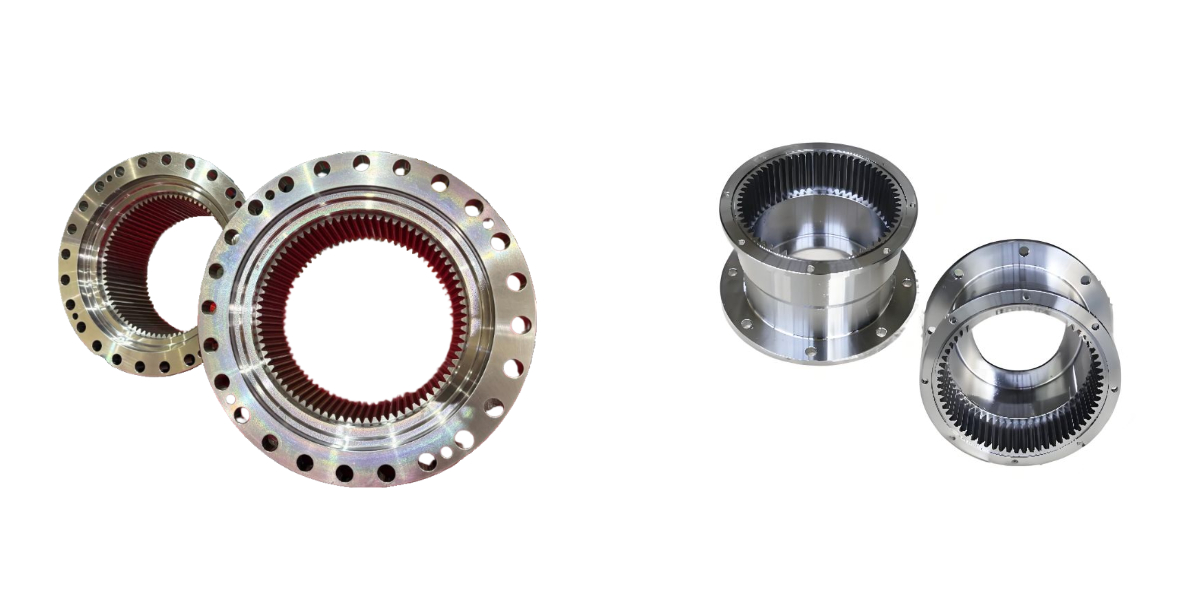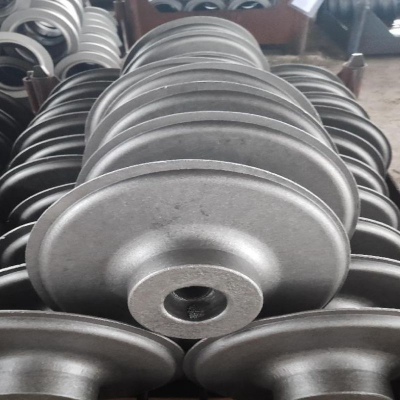What is the Ring Gear in the Transmission? Everything You Need to Know
What is the Ring Gear in the Transmission? Everything You Need to Know
Whether it is the transmission system of automobiles, industrial machinery or heavy equipment, there is one component that is often overlooked but plays a crucial role - that is the ring gear. If you have ever wondered how power is smoothly transferred from the engine to the wheels, or why your rotary reducer can maintain a stable torque, then the gear ring is the key role. This article will comprehensively disassemble the relevant knowledge of gear rings in transmission systems, from basic definitions to practical applications, to help mechanics, car owners, and industry practitioners clearly understand this important mechanical component.
1. What exactly is the gear ring in the transmission system? Definition and core functions
Essentially, a ring gear (also known as a gear ring in some industrial Settings) is a circular gear with teeth machined on its inner or outer edges. It is designed to mesh with pinion gears (such as planetary gears) to transmit rotational force within a transmission system. Unlike the high-speed rotating pinion, the gear ring usually rotates at a slower speed but can output greater torque. Therefore, it is an indispensable component when balancing speed and power in a transmission system.Take the automotive transmission system as an example. The gear ring is connected to the differential, which can evenly distribute the engine power to the left and right wheels, and at the same time meet the vehicle's steering requirements. In industrial scenarios, mechanical gear rings play a similar role and are often used in machinery such as conveyor belts and construction equipment. Such equipment has extremely high requirements for the stable transmission of torque. Even in rotary reducers used to reduce rotational speed and increase torque, the gear ring serves as a fixed or rotating component to precisely regulate the power output.
The uniqueness of the gear ring lies in its ability to withstand heavy loads without affecting performance. Its large diameter design can distribute pressure to more teeth, significantly reducing the degree of wear compared to pinions. For engineers, it is crucial to understand the engineer gear ring (a term often referring to precision gear rings manufactured for specific scenarios), as its design directly affects the efficiency, durability and safety of the transmission system.
2. Types of Gear Rings: Internal gear rings, internal gear rings and external gear rings suitable for different transmission systems
Not all ring gears are exactly the same - their designs are adjusted according to the requirements of the transmission system and are mainly divided into three categories: internal ring gear, inner ring gear (often used interchangeably with internal gear ring) and external ring gear. Each type has a specific application. When making a choice, factors such as space limitations, torque requirements, and the direction of power transmission should be taken into consideration.
internal ring gear: As the name suggests, the teeth of the internal ring gear are cut on the inner side of the ring, and the pinion (such as a planetary gear) meshes with it from the inner side. This design is commonly seen in automatic transmissions and rotary reducers because it can save space and achieve a compact transmission layout. For instance, in the core component of many car gearboxes - the planetary gear set, the internal gear ring surrounds the planetary gears and regulates the rotational speed by fixing or rotating itself, thus achieving smooth gear shifting. Mechanics usually focus on checking the wear of the internal gear ring, as damage to the teeth here can cause slippage or jerking when shifting gears.
external ring gear: Unlike the internal ring gear, the teeth of the external ring gear are located on the outside of the ring, and the pinion meshes with it from the outside. This type of gear ring is commonly found in manual transmissions and heavy machinery due to its simple structure and strong load-bearing capacity. Take the truck transmission system as an example. The outer gear ring may be connected to the clutch system to directly transmit power to the drive shaft. Because the external gear ring is more accessible during maintenance, it is also often used in equipment that requires regular inspection.
inner ring gear: Although "inner ring gear" is often used interchangeably with "inner ring gear", some engineers define it as a smaller and more precise version, suitable for compact systems such as electric vehicle (EV) gearboxes. Due to the extremely high requirements for power transmission efficiency in electric vehicles, the manufacturing tolerances of the inner ring teeth are stricter to minimize energy loss to the greatest extent. No matter how the terms are distinguished, both the internal ring gear and the inner ring gear rely on a closed design to maximize torque within a limited space - which is also a key feature of modern compact transmission systems.
3. How to Maintain Gear Rings? Tips for preventing malfunctions and extending service life
Properly maintained ring gears can last for several years, but neglecting maintenance can lead to high repair costs for the transmission system and even cause system failures. Whether you are dealing with engineer gear rings in industrial machinery or standard gear rings in automotive transmission systems, the following maintenance tips can help keep them in the best condition.
First of all, regular inspections are indispensable. Pay attention to signs of wear, such as cracked teeth, rust or excessive tooth side clearance (the clearance between the gear ring and the meshing pinion). For example, in a rotary reducer, if the mechanical gear ring has the problem of excessive tooth side clearance, it will lead to uneven torque transmission and subsequently cause mechanical vibration. It is recommended to use a dial indicator to measure the tooth side clearance - the best range recommended by most manufacturers is 0.001 to 0.003 inches (approximately 0.025 to 0.076 millimeters).
Secondly, lubrication is the key. The gear ring operates under high pressure. Using the appropriate lubricant (usually heavy-duty gear oil) can reduce friction and prevent overheating. For the internal ring gear that is difficult to reach, spray lubricants with long nozzles can be selected to ensure comprehensive lubrication. However, it is necessary to avoid over-lubrication - excessive lubricating oil will attract dust and impurities, which will rub against the teeth and accelerate wear.
Third, handle alignment issues in a timely manner. Misalignment of the ring gear (commonly seen in old transmission systems or equipment after collision) can lead to uneven contact between the teeth, thereby causing failure prematurely. In automotive applications, a misaligned gear ring may make a whining sound during acceleration. If this occurs, a mechanic should be called to check the alignment of the transmission system. For industrial gear rings, it is recommended to use a laser alignment instrument to ensure that the gear ring is fully aligned with the pinion.
Finally, replace the worn parts as soon as possible. If severe damage to the ring gear is found (such as broken teeth or deep scratches), do not delay replacement. A faulty gear ring may damage other transmission components, leading to minor repairs evolving into major ones. When replacing, high-quality gear rings that meet the original factory specifications should be selected - this can ensure compatibility and maintain the performance of the transmission system.
4. Practical Application: The outstanding performance of gear rings outside the automotive transmission system
Although the ring gear in the transmission is most often associated with automobiles, its uses are far beyond the automotive field. From industrial machinery to renewable energy systems, ring gear and its derivative types (such as mechanical gear ring, engineer gear ring) play a "main force" role in countless industries.
One of the important application scenarios is the rotary reducer, which is widely used in wind turbines, solar trackers and construction equipment. In the rotary reducer of a wind turbine, the gear ring works in conjunction with the planetary gears to convert the slow rotation of the turbine blades into the high-speed rotation required for power generation. The internal ring gear in this type of reducer needs to withstand extreme weather conditions such as strong winds and temperature fluctuations, and thus becomes a key component in the production of renewable energy.
Another core application area is material handling equipment, such as forklifts and cranes. The transmission system of the forklift relies on the external ring gear to transfer power from the engine to the wheels, enabling it to lift heavy objects precisely. In cranes, the gear ring is a component of the lifting mechanism - its large diameter design ensures that the load rises and falls slowly and safely, avoiding sudden drops.
Even in the field of robotics and automation, ring gear has its place. The robotic arm will use small and precise inner ring gears to achieve smooth and controllable movements. The manufacturing tolerances of these gear rings are extremely high, which can ensure the accuracy of the robot when it completes fine tasks such as electronic assembly.
Finally, in agricultural machinery such as tractors and harvesters, the ring gear is a part of the power output (PTO) system, responsible for transmitting the power of the tractor engine to accessories such as plows and lawn mowers. The mechanical gear rings in this type of system are specially designed to withstand heavy loads and complex terrains and are essential components for modern agricultural operations.
Conclusion
The ring gear in the transmission system is by no means a simple gear - it is a fundamental component that enables efficient power transmission in various devices ranging from automobiles to wind turbines. Whether you are a car owner who wants to understand the transmission system of your own vehicle, a mechanic maintaining industrial equipment, or an engineer designing new rotary reducers, it is crucial to master the working principle, types and maintenance methods of gear rings.
From the internal ring gear in compact transmission systems to the external ring gear in heavy machinery, each type has unique uses, and its performance directly affects the operating state of the systems it serves. By following the correct maintenance methods and choosing high-quality gear rings, you can ensure the long-term stable operation of the transmission system (and its affiliated equipment). The next time you start a car or operate machinery, you might as well pay more attention to the gear ring - this "unsung hero" in the field of power transmission.





